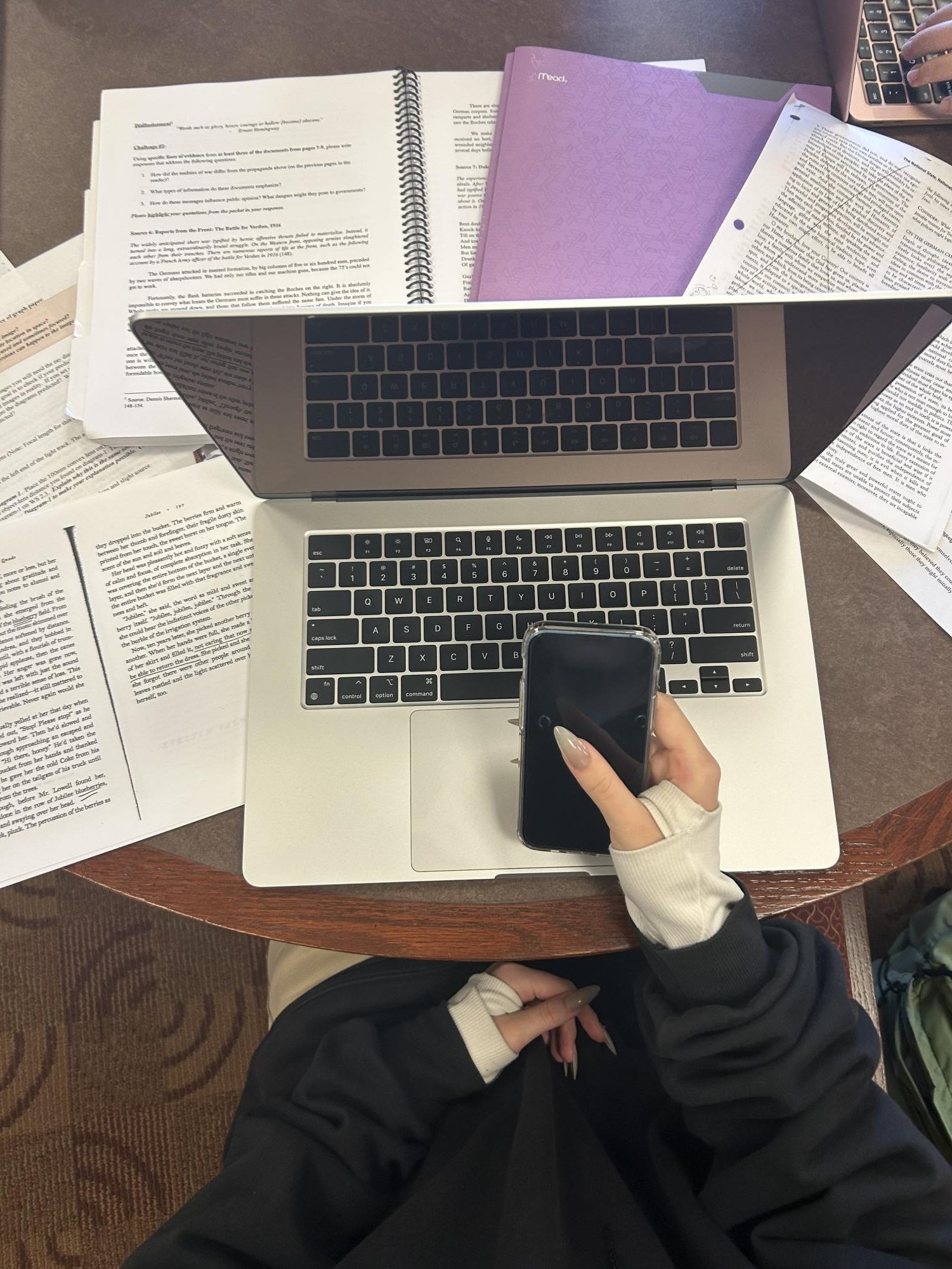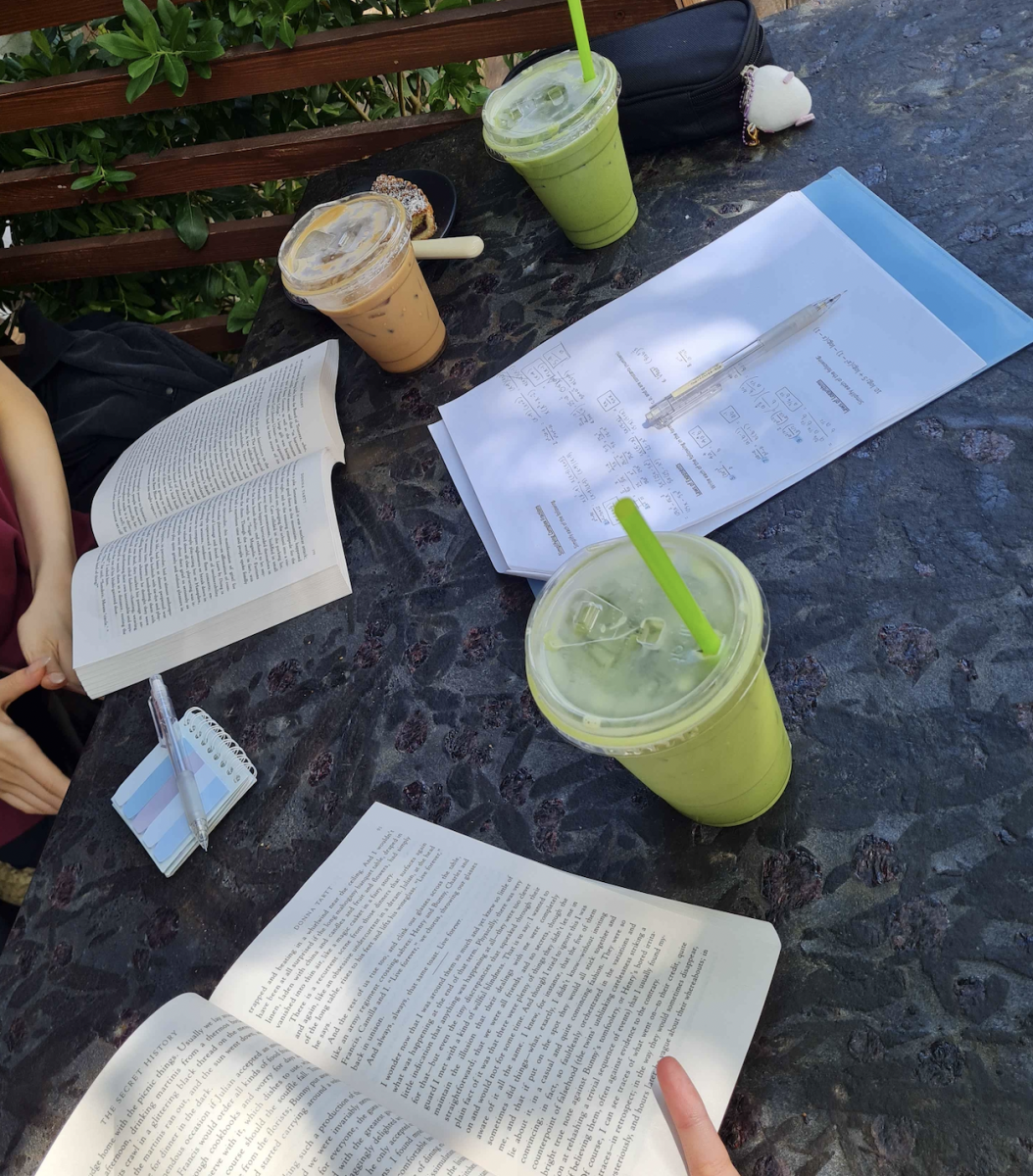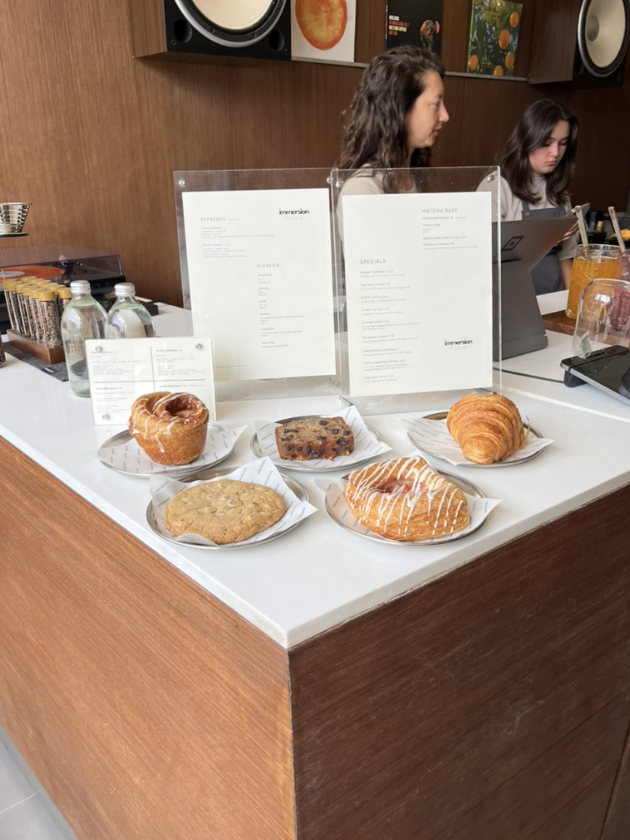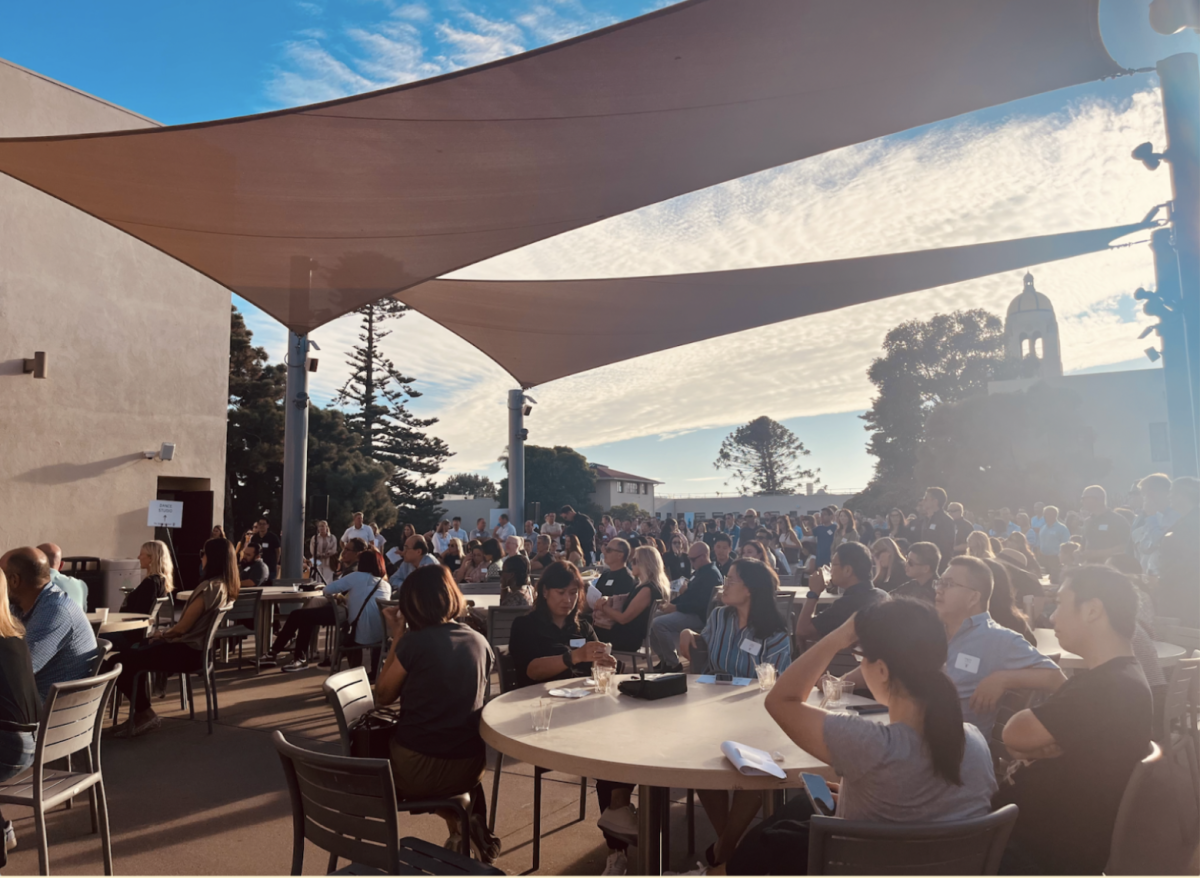Faced with an intimidating amount of homework after a long day, students decide to retreat back into their favorite comfort apps. While repeating phrases like “It’s just a brain break,” or “It’ll only be a couple of videos and then no more,” they inadvertently start to scroll. It’s 12:00 A.M. when they next look up from their screens and the regret starts to seep in.
Week by week, the same patterns occur; students are having trouble staying focused when completing homework. The scrolling algorithms built into social media apps, like TikTok or Instagram Reels offer students a much more appealing alternative than completing homework assignments. However, students are becoming more and more conscious of this change.
According to a Pew Research Study from 2018, “41% [of teens] say they spend too much time on social media.” The little screen we carry around everyday can be a helpful tool when working or looking something up, but it can also be a tempting distraction just as easily.
Thankfully, social media isn’t fully taking over all teenage brains. According to a Pew Research Study more recently from 2024, “Roughly four-in-ten teens (39%) say they have cut back on their time on social media. A similar share says the same about their phone (36%).” Although many students might have trouble controlling their time spent on social media, they are conscious of their actions, and always have the option to stop watching.
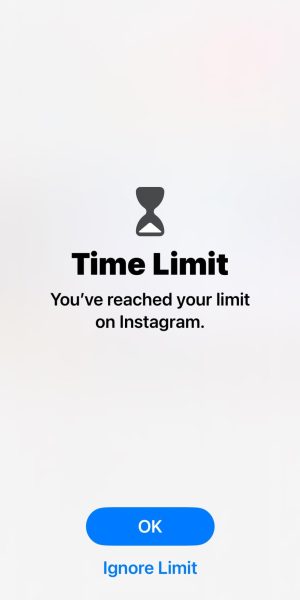
Lilah Hsu (‘28) explained how “it’s satisfying for me to swipe and see another just start playing.” Yet this is exactly the problem, leading students to “just sit there,” as Lilah describes, staring at their phones, all while avoiding the daunting task of homework. She adds, “[Homework] just gets really tiring and boring, and watching social media is 100% more entertaining.”
Olivia Alexander (‘25) deleted TikTok off her phone and set a time limit for Snapchat for Lent. She has overall felt a positive change from these actions. Although, without TikTok to keep her updated on the latest trends, she felt like she was missing out on other things her friends were experiencing. However, she states, “I feel like I have more time to devote to the things I really care about.” With the temptation of doom scrolling gone, Olivia has felt that it is easier to make new routines and pick up new habits.
On Speaking of Psychology, the flagship podcast of the American Psychological Association, Dr. Gloria Mark, a psychologist and the chancellor’s professor of informatics at the University of California Irvine, speaks about her research on how devices can affect attention spans. She talked about something called switch cost. “Every time you switch your attention, you have to reorient to that new activity, that new thing you’re paying attention to, and it takes a little bit of time,” she described.
So when a student decides to switch their focus onto watching videos, a relatively easy task, it’ll take more brainpower to switch back to their work because they have to get back into the “work mode.” Dr. Mark explained how, with kids, “It takes them much longer to get back and focus again on that thing that they were distracted from.”
Olivia has found a quick and easy solution to prevent switch cost from affecting her. Without social media to divert her attention away from homework, she describes her process as “a lot quicker and higher quality overall.”
But, the TikTok algorithm is more sneaky than you’d imagine, doing all it can to keep its users on its app. By following certain content creators, liking specific posts, or even watching certain videos for longer periods of time, it automatically recommends videos that might be more appealing to you.
TikTok support explains how the app feeds off of the user’s choices. “Your interactions act as signals that help the recommender systems predict content you’re more likely to be interested in as well as the content you might be less interested in and may prefer to skip.”
Instagram uses a similar system, relying on user interactions. They pay attention to five main things, including time spent watching the videos, comments, follows, and shares. According to an article written by Adam Mosseri, the CEO of Instagram, “The more likely you are to take an action, and the more heavily we weigh that action, the higher up you’ll see the post. We add and remove signals and predictions over time, working to get better at resurfacing what you’re interested in.” This way, in providing users videos that appeal to their interests, these scrolling platforms keep their users hooked for longer.
When Madison Gasaway (‘28) first went onto Instagram Reels, she immediately went to follow celebrities and people she liked. “The algorithm is matched to my taste so it’s kind of hard to stop scrolling,” she says. It’s easy to move away from something that is uninteresting, however it’s much harder when it’s something that captivates you.
Olivia explained that, before when she had social media, she would always put her phone on do-not-disturb and away from where she worked which allowed her to focus. But that didn’t stop her from being tempted to go on her phone and doom scroll to avoid homework. Now, without the option of doom scrolling, she says, “I just put my phone down and get started on whatever I need to do.”
Lilah can see the changes happening and is aware that it’s harming her brain. However, there are ways that she stays clean and off of her screens. “I have this rule at my house where all electronics are supposed to stay downstairs.” If that doesn’t work, she turns to her parents, asking them to set a time limit for specific apps, which she says “is great.”
The main thing that Dr. Mark emphasized during her talk on the podcast was the importance of taking meaningful breaks. She said, “The problem is that in our current world,in many work environments people neglect to take meaningful breaks, and we get ourselves into a position where our performance suffers as a result.” Although taking breaks is necessary so the brain is not overloaded with information, it’s important to set a limit and control how much time you are spending on each task.
Setting time limits can be a productive way to control how much time is spent on screens, however, the main thing to keep in mind is to take meaningful breaks instead of letting loose. Just do the things that will rest your brain and ensure that when you return, you can work at 100%.


